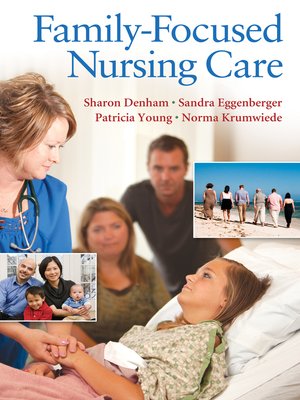

For example, maternity wards are being redesigned with family-friendly postpartum rooms that can accommodate the mom, new baby, and family members, who are encouraged to spend up to 24 hours a day together in the room to foster family bonding. A patient-centered care hospital’s infrastructure encourages family collaboration through a home-like environment that not only meets the needs of the patient, but also meets the needs of family members. When not in the room with the patient, they are kept informed of their loved one’s progress through direct and timely updates. Family members (as defined by the patient and not limited to blood relations) are invited to visit during rounding and shift changes so they can be part of the care team, participating in discussions and care decisions. Patients are given the authority to identify who can visit and when. Strict visiting hours and visitor restrictions are a thing of the past in a patient-centered care model.

Tools range from 24/7 online portals that let patients schedule appointments, get information about their condition and care instructions, review lab results and doctor’s notes, and pay bills at their convenience, to wearable technology and apps that let patients track their “important numbers” such as weight, blood pressure, glucose levels, and cholesterol. While human interaction takes a primary role in patient-centered care, physician practices may also employ a variety of technology-based tools to help patients take ownership of their health care outside of the doctor’s office. This broader look at the needs of the whole patient requires providers to offer services or referral to services such as peer support programs, social workers, financial counselors, mental and emotional health providers, transportation and daily living assistance, and in some communities, language and literacy education. Empathy, two-way communication, and eye-to-eye contact are crucial, as is the ability of the doctor to see beyond a patient’s immediate symptoms or pain. Patients have trusted, personal relationships with their doctors in patient-focused care models.

Under patient-centered care, care focuses more on the patient’s problem than on his or her diagnosis. Patient-centered care in the doctor’s office. Patient-focused care is realized in a number of ways, across a variety health care settings, from family care and specialty providers, to acute, emergency, and long-term care providers. Information is shared fully and in a timely manner so that patients and their family members can make informed decisions. The presence of family members in the care setting is encouraged and facilitated. Patients and their families are an expected part of the care team and play a role in decisions at the patient and system level. Patient and family preferences, values, cultural traditions, and socioeconomic conditions are respected. The right care is provided at the right time and the right place.Ĭare focuses on physical comfort as well as emotional well-being.
#Family focused care drivers
The health care system’s mission, vision, values, leadership, and quality-improvement drivers are aligned to patient-centered goals.Ĭare is collaborative, coordinated, and accessible. Most definitions of patient-centered care have several common elements that affect the way health systems and facilities are designed and managed, and the way care is delivered: Patient- and family-centered care encourages the active collaboration and shared decision-making between patients, families, and providers to design and manage a customized and comprehensive care plan.


 0 kommentar(er)
0 kommentar(er)
